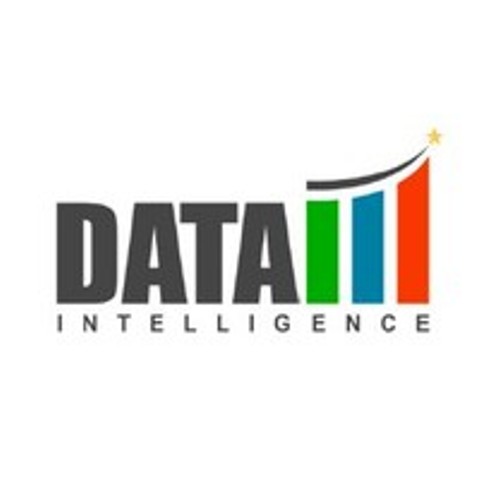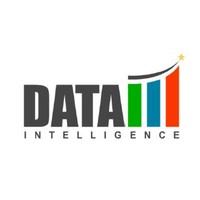Toxoplasmosis Testing Market Size, Share, Outlook By 2021-2028

Market Overview
The Global Toxoplasmosis Testing Market is estimated to reach at a high CAGR of 6.4% during the forecast period (2021-2028)
(ProNewsReport Editorial):- Alabaster, Alabama Nov 10, 2021 (Issuewire.com) – Market Overview
The Global Toxoplasmosis Testing Market is estimated to reach a high CAGR of 6.4% during the forecast period (2021-2028)
Toxoplasmosis is caused by infection with the protozoan Toxoplasma gondii, an obligate intracellular parasite. The infection produces a wide range of clinical syndromes in humans, land and sea mammals, and various bird species. T gondii has been recovered from locations throughout the world, except Antarctica.
The seroprevalence of T gondii antibodies in the human population varies geographically, with prevalence rates approaching 90% in some European countries, while seropositivity rates in the United States have been estimated to fall between 10% and 15%.
Infection with the human immunodeficiency virus (HIV) does not seem to affect T gondii seropositivity, and there does not appear to be any difference in the rate of toxoplasmosis infection among patients with AIDS with and without cats. The diagnosis of toxoplasmosis is majorly done by toxoplasmosis serologic profile (TSP) tests which include dye test, indirect immune fluorescent test (IFAT), modified agglutination test (MAT), enzyme-linked immunosorbent assay (ELISA), immunoglobulin tests (IgG, IgM, and IgE antibodies tests), and amplification of specific nucleic acid sequences (i.e., PCR), among others. In infants, diagnosis can be performed by procedures such as amniocentesis and ultrasound scan. Diagnosis can also be made by direct observation of the parasite in stained tissue sections, cerebrospinal fluids (CSF), and blood, but these procedures are less frequently used because of difficulty in obtaining samples.
Download free sample:https://www.datamintelligence.com/download-sample/toxoplasmosis-testing-market
Market Dynamics
Rising incidences of Toxoplasmosis, along with major consumption of meat, pork, and mutton, has resulted in increasing demand for effective testing methods for T.gondii by diagnostics laboratories.
The latest data shows that Americans eat an annual 66.18 pounds of pork per capita. The U.S. Census data and Simmons National Consumer Survey (NHCS) found that 268 million Americans ate bacon in 2020, with over 16 million eating five pounds of bacon or more during the year. The prevalence in other meat-producing animals, such as sheep, goats, and horses, has not changed over time, because the source of infection of these herbivorous animals kept on pastures has remained unchanged. In farmed sheep, the seroprevalence in Europe is logically correlated with age, increasing from lambs (17 to 22%) to adults (65 to 89%).
Prevalence in poultry also varies markedly according to production systems. Toxoplasma infection in industrialized poultry farms is practically absent, while the seroprevalence in free-range or backyards chickens is usually high, up to 100%. Due to their habit of feeding close to the ground, free-range chickens have indeed been considered a good indicator of environmental contamination by Toxoplasma oocysts.
It is generally assumed that approximately 25 to 30% of the world’s human population is infected by Toxoplasma. Actually, the prevalence varies widely between countries (from 10 to 80%) and often within a given country or between different communities in the same region.
Low seroprevalences (10 to 30%) have been observed in North America, in South East Asia, in Northern Europe, and in Sahelian countries of Africa. Moderate prevalence (30 to 50%) has been found in countries of Central and Southern Europe, and high prevalence has been found in South America and in tropical African countries.
As for animals, many factors can affect seroprevalence in humans. Climatic factors affect the survival of oocysts in the environment and, hence, infection rates in meat-producing animals play a major role. The higher prevalence is classically observed for tropical countries with a humid and warm climate, and conversely, lower prevalence is found for arid countries or for colder countries, but anthropogenic factors explain a large part of the variations in human seroprevalence, including dietary habits
Market Segmentation Analysis
Test Type
- Serological test
- Dye Test
- Indirect Immune Fluorescent Test (IFAT)
- Modified Agglutination Test (MAT)
- Enzyme-Linked Immunosorbent Assay (ELISA)
- Immunoglobulin Tests (IgG, IgM, and IgE antibodies Tests)
- Indirect Hemagglutination Assay, Direct Agglutination Test)
- Others (PCR, others))
By Sample Type (Blood Sample)
- Amniotic Fluid,
- Cerebrospinal Fluid)
- By End-User (Hospital
- Diagnostic Laboratories
- Clinics
Geographical Analysis
Asia-Pacific is expected to grow at a CAGR of 6.2% throughout the forecast period. The prevalence of toxoplasmosis was estimated to vary from 2% to 70% in the Southeast Asian population. Contact with cat and consumption of uncooked meat was the most common risk factors in acquiring high-rate Toxoplasma infection profusely. In pregnant women, 23 to 49% of Toxoplasma prevalence was found in Malaysia and it was shown to be the highest Toxoplasma rate found in this region as compared to 1.4 to 21.7% in Thailand up to 17.2% in Singapore and 11.2% in Vietnam.
Moreover, toxoplasmosis was found to be a common cause in patients with infectious posterior uveitis. With the concurrent HIV/AIDS pandemic, toxoplasmosis was shown to be highly prevalent in HIV-infected patients, with the substantial incidence of toxoplasmic encephalitis (TE) in AIDS patients being reported mainly from Malaysia, Singapore, and Thailand.
HIV/AIDS is the subject of great interest and of utmost concern particularly in Southeast Asia, being a region of the fastest-growing HIV epidemic in the world. Toxoplasmosis is still reported in clinical practices in co-existence with HIV/AIDS patients.
Whereas HIV-associated Toxoplasma reactivation has readily decreased in high-income countries, after the introduction of highly active antiretroviral therapy, it is still very prevalent in low-income countries. Serology (IgG and/or IgM antibodies), is shown as a sensitive investigation to determine whether toxoplasmosis is primary, which is less common, or secondary (reactivation), which occurs in more than 95% of these patients. However, other techniques are also used to detect the presence of organisms, but the sensitivity and specificity are quite varied and depend on its availability or unavailability in the laboratory in the region.
The presence of Toxoplasma-specific IgM antibody suggests infection within the past 2 years. False-positive IgM results are common, and the tests should always be repeated before final interpretation. False-positive results are particularly common in autoimmune diseases.
The challenges for developing a more effective treatment for toxoplasmosis include decreasing toxicity, achieving therapeutic concentrations in the brain and eye, shortening duration, eliminating tissue cysts from the host, safety in pregnancy, and creating a formulation that is inexpensive and practical for use in resource-poor areas of the region.
Over the last decade, significant progress has been made in identifying and developing new compounds for the treatment of toxoplasmosis. Unlike clinically used medicines that were repurposed for toxoplasmosis, these compounds have been optimized for efficacy against toxoplasmosis during preclinical development. These factors are driving the growth of the market in the region.
Competitive Landscape
The toxoplasmosis testing market is competitive and consists of several major players in the market. Some of the key players which are contributing to the growth of the market include ACON Biotech, Biokit, Biomérieux, Abbott Laboratories, Bio-Rad, Diasorin S.p.A., Bionote, Atlas Medical, LifeSpan BioSciences, Elitechgroup, Genemedi Suzhou Biotechnology, Gold Standard Diagnostic, Thermo Fisher Scientific., among others.
There are several serological tests are available for IgG detection with different sensitivities and specificities offered by companies, such as Architect® Toxo IgG assay (by Abbott Laboratories) which shows specificities and sensitivities ranging from 99.1% to 99.8% and 92.1% to 99.7%, respectively. Other commonly used automated or semi-automated immunoassays such as Advia Centaur®, AxSym®, Elecsys®, Enzygnost®, Liaison®, Platelia®, Vidas®, and Vidia® shows various specificities from 99.3% to 100%, while sensitivities range from 93.8% to 100%.
The major players are adopting several growth strategies such as product launches, acquisitions, and collaborations, which are contributing to the growth of the toxoplasmosis testing market globally. For instance, in October 2017, Bio-Rad Laboratories received FDA approval for its BioPlex 2200 ToRC IgM Assay, a fully automated assay for the detection of IgM class antibodies to Toxoplasma gondii, rubella, and cytomegalovirus offered in a multiplexed panel. When used with the BioPlex 2200 System, the BioPlex 2200 ToRC assays, both the IgG and IgM, provide a rapid and comprehensive prenatal testing solution for three of the most clinically significant diseases. Toxoplasma gondii,
rubella and CMV are pathogens commonly associated with congenital diseases and therefore are tested during the first trimester of pregnancy.
View full report:https://www.datamintelligence.com/research-report/toxoplasmosis-testing-market
Related reports:
Media Contact
DataM Intelligence
+18774414866
India

More on the Pronewsreport:
- Why Should You Read the Latest Music News?
- Get Indulged in Electronic Dance Music with Christian Krauter
- Let’s Enjoy the Powerful Music of the New Milford Pop Singer Kevin C. Browne’s Release ‘Escape To Nowhere’
- Is the Press Release a Blog? Press Release Vs. Blog Post
- What Are The Pros Of Hiring a Professional Book Marketing Services in 2024?










